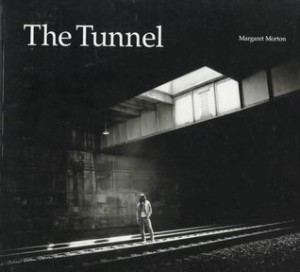Irina Nersessova’s article Tapestry of Space: Domestic Architecture and Underground Communities in Margaret Morton’s Photography of a Forgotten New York discusses the behavioral and psychological impact that urban life, photography, and architecture brings to humans living in urban New York at the time. The article also sheds light of the term “spectacle” which Morton uses to comment on society’s reliance on consumption through image promotion (Nersessova). This term helps describe why humans are subject to wanting the material things that they often see around them and are familiar with. Images influence people into having commodities in which they feel they need. Morton’s main premise of her argument was how space and the environment is a commodity given off through New York photography and she wanted to explore the New York that exists beyond the spectacle and discover the places that exist within the city that is not often displayed and adored as the famous New York City.
Nersessova uses the term d`erive (also referred to as the “drift”) as a technique for exploring spaces and to understand the environments psychological impact. This term is most commonly used to represent the casual wander in a space or environment and the psychological mood and effect it has on the mind in that specific space. She tells us a story of a man named Bernard who lives in New York and feels that aboveground life in the city is too distracting from the individual self. The aboveground lifestyle is all that photographers seem to capture in New York along with excessive human interaction. The underground life is not dedicated to images or accumulating commodities, so Bernard uses this space to achieve the level of consciousness he believes is necessary (Nersessova). While he was secluded and moved out of the public eye, he notices that his new life in the tunnels of New York brings him more security and a place to find himself. Nersessova brings in this example from Morton’s book into her article to help portray exactly how the atmosphere of a place and the environment can bring psychological change in the way one feels.


Nersessova also adds that the atmosphere of a place contributes to the business of tourism and consumerism. Seeing photographs of urban architecture is what attracts tourism to that specific place. The environment and energy emitted from places and photographs effects emotion and behavior which Morton describes in her study of space.
Later throughout the article Nersessova pulls aspects of domestic architecture. Domestic architecture refers to the homeless population’s construction of home environments (Nersessova). She describes that the difference between real homelessness and the rest of the population is the inventive nature of endurance they show to us and level of reality they are faced with. As we read throughout the end of this article we notice Nersessova provides evidence of the way she classifies the true state of homelessness and whether or not domestic architecture negates the definition of a necessity and an accessory. As the article comes to a conclusion we have a more in depth understanding of the personal meaning of architecture and how everyone creates their own individual space for their own survival.
NERSESSOVA, IRINA. “Tapestry Of Space: Domestic Architecture And Underground Communities In Margaret Morton’s Photography Of A Forgotten New York.” Disclosure 23 (2014): 26. Advanced Placement Source. Web. 20 Nov. 2015.